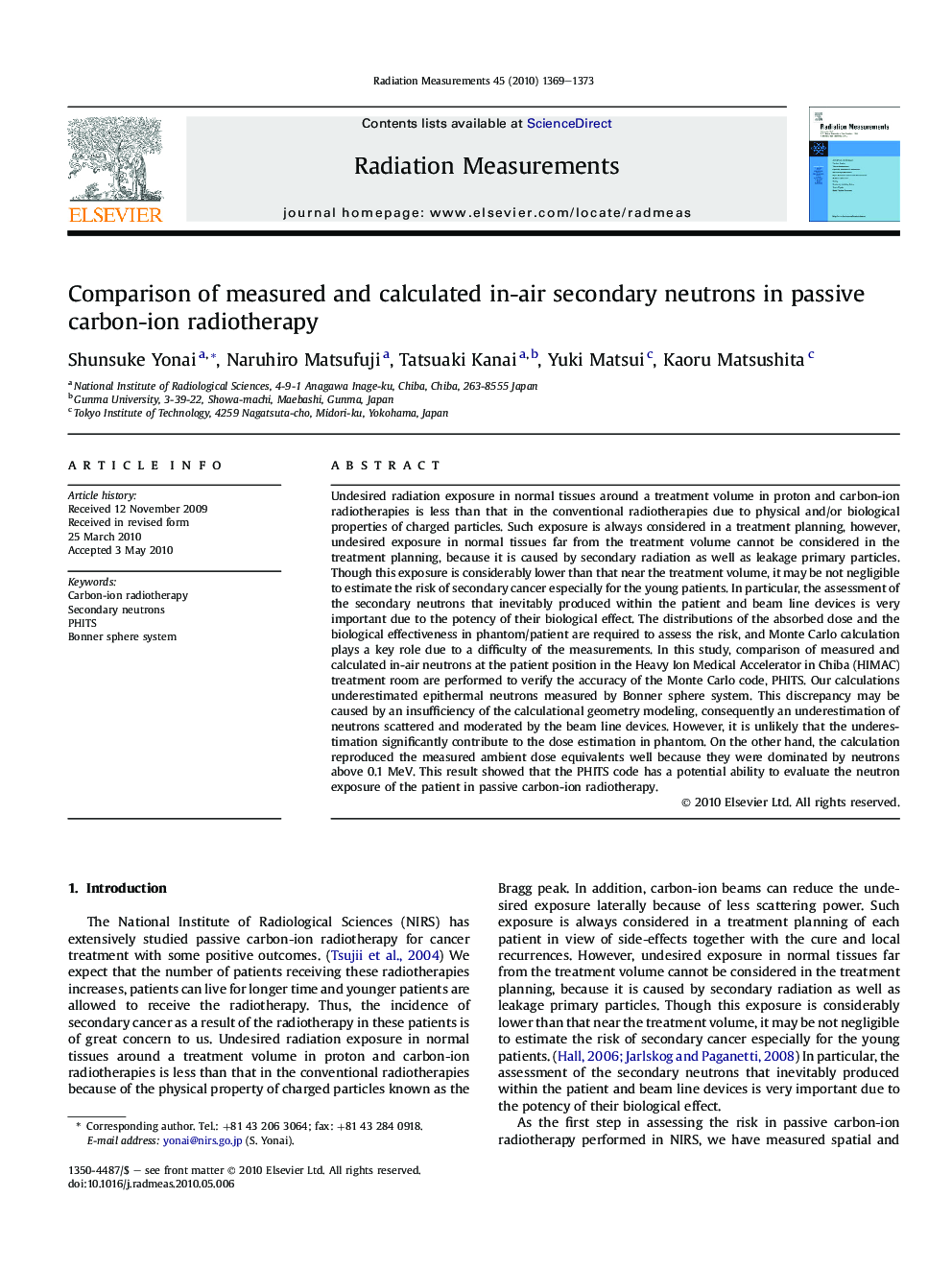| کد مقاله | کد نشریه | سال انتشار | مقاله انگلیسی | نسخه تمام متن |
|---|---|---|---|---|
| 1885314 | 1043402 | 2010 | 5 صفحه PDF | دانلود رایگان |
عنوان انگلیسی مقاله ISI
Comparison of measured and calculated in-air secondary neutrons in passive carbon-ion radiotherapy
دانلود مقاله + سفارش ترجمه
دانلود مقاله ISI انگلیسی
رایگان برای ایرانیان
موضوعات مرتبط
مهندسی و علوم پایه
فیزیک و نجوم
تشعشع
پیش نمایش صفحه اول مقاله

چکیده انگلیسی
Undesired radiation exposure in normal tissues around a treatment volume in proton and carbon-ion radiotherapies is less than that in the conventional radiotherapies due to physical and/or biological properties of charged particles. Such exposure is always considered in a treatment planning, however, undesired exposure in normal tissues far from the treatment volume cannot be considered in the treatment planning, because it is caused by secondary radiation as well as leakage primary particles. Though this exposure is considerably lower than that near the treatment volume, it may be not negligible to estimate the risk of secondary cancer especially for the young patients. In particular, the assessment of the secondary neutrons that inevitably produced within the patient and beam line devices is very important due to the potency of their biological effect. The distributions of the absorbed dose and the biological effectiveness in phantom/patient are required to assess the risk, and Monte Carlo calculation plays a key role due to a difficulty of the measurements. In this study, comparison of measured and calculated in-air neutrons at the patient position in the Heavy Ion Medical Accelerator in Chiba (HIMAC) treatment room are performed to verify the accuracy of the Monte Carlo code, PHITS. Our calculations underestimated epithermal neutrons measured by Bonner sphere system. This discrepancy may be caused by an insufficiency of the calculational geometry modeling, consequently an underestimation of neutrons scattered and moderated by the beam line devices. However, it is unlikely that the underestimation significantly contribute to the dose estimation in phantom. On the other hand, the calculation reproduced the measured ambient dose equivalents well because they were dominated by neutrons above 0.1Â MeV. This result showed that the PHITS code has a potential ability to evaluate the neutron exposure of the patient in passive carbon-ion radiotherapy.
ناشر
Database: Elsevier - ScienceDirect (ساینس دایرکت)
Journal: Radiation Measurements - Volume 45, Issue 10, December 2010, Pages 1369-1373
Journal: Radiation Measurements - Volume 45, Issue 10, December 2010, Pages 1369-1373
نویسندگان
Shunsuke Yonai, Naruhiro Matsufuji, Tatsuaki Kanai, Yuki Matsui, Kaoru Matsushita,